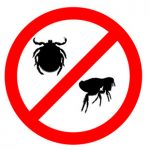
How to detect and recognize ticks and fleas ?
The good days are there and, with them, some guests invariably present every year : ticks and fleas !
Mild temperatures are, Indeed, conducive to the multiplication of these parasites.
Here is how to tell if your pet is involved and how to fight against these little invaders…
A brief introduction
Fleas and ticks are bloodsucking parasites, that is to say, they feed on their host's blood.
Fleas
Fleas are flat, brown color and a few millimeters in length.
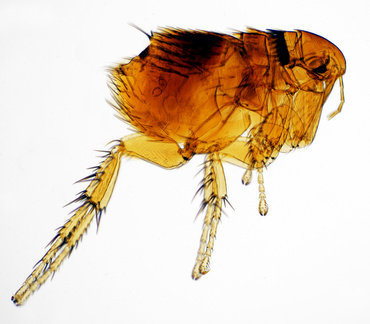
Chip observed under a microscope
Only adult fleas infect pets.
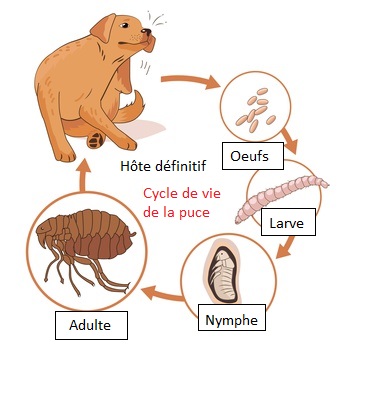
the chip development cycle
The flea bites its host to ingest blood and 24 to 48 hours later, lays eggs that will be scattered throughout the animal environment. The other stages of development of the chip is therefore happening in the environment. eggs, larvae and pupae also much delight in our homes warm and cozy. It is for this reason that fleas can infect dogs and cats all year !
Ticks
Depending on their stage of development and the amount of blood they ingested, tick size from a few millimeters (tick fasting) over 1 centimeter (when engorged).
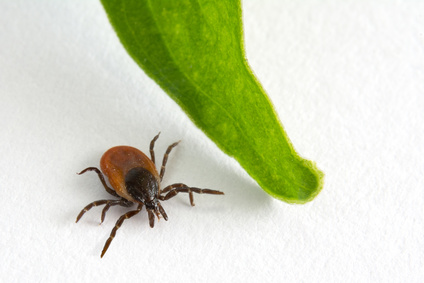
The tick is a mite, she owns 4 pairs of legs
Adult ticks, but also the larvae and pupae, are bloodsucking. They achieve their blood meal on small mammals in the early stages and then in mammalian larger (including dog, CAT, cow, cervids… and even the man). The risk of infection is much higher in some environments that ticks all particularly fond as woodlands, fields and tall grass.
How to see and recognize these parasites ?
Fleas
To get to see fleas on a pet, we must look to the skin, at the base of hairs, and even rather look the wrong way. Areas where can be seen the back are preferably, the rump and the base of the tail. You can also inspect the head and belly : it may happen that the way to run in these less affluent areas bristles when infestation is important.
If you can identify with, you'll pass a small insect that moves very quickly on the skin. No hope of catching or crush the chips, it is usually impossible with fingers. They are, Indeed, extremely fast and have a shell that protects very effectively : For more chances to observe chips, you can pass a comb on the back of your pet. You pass the comb and you drop your revenues on a white sheet or a compress.
Ticks
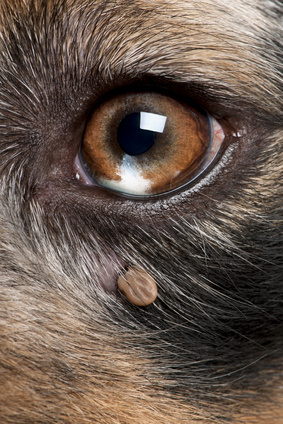
tick visible under the lower eyelid of a dog
Unlike fleas, ticks do not move on animals.
They climb on him when & rsquo; it happens in areas where they are present, bind biting his skin and then remain hanging. We thus find the, most often, on areas of the body close to the ground and vegetation : legs, belly, neck, sides, muzzle…
You can find ticks by carefully inspecting your pet : It is, Indeed, Sometimes you can feel them caressing or, according to their size, to see directly.
At & rsquo; observation, they can be confused with a wart or cyst, especially as some ticks pinkish. But looking carefully at the base of the hairs, we can see the head attached to the skin and small tabs on the sides.
Mostly, do not try to remove a tick by pulling or with tweezers after having covered ether : a part of the head would, Indeed, under the skin and might cause an inflammatory reaction (on the other hand, to combat a widespread belief still frequently, a tick will "reject" not !). For easy and complete removal of the tick, there are small highly effective tick hooks that you can obtain from your vet. Do not hesitate to ask for advice.
Other indications of their presence
Because of their speed and small size, it is often extremely difficult to see directly fleas on the animal. You would have understood it : not see chip does not mean that your pet has not ! He will be, on the other hand, often much easier to observe traces of their presence : their droppings. Flea droppings are small black dandruff at the base of hairs. They are observable by removing hair in various places especially in the areas mentioned above (rump, base of the tail…).
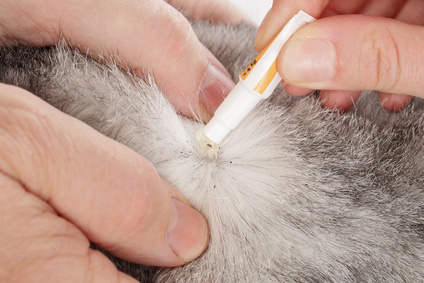
Droppings chips observed in the hair of a cat
They may be harvested by passing a comb on the back of the animal or by applying a wet compress in areas where they have been identified. To ensure that these are flea droppings, deposit these films on a white handkerchief or gauze and slightly wet with water. By dispersant, these droppings leave a reddish mark, sign that it is indeed digested blood.
The presence of fleas should be suspected when your present itching animal. Often a flea infested animal scratches, although this is not systematic.
In an animal allergic to flea bites, very large skin lesions may appear : rash, crusts, depilations, even if the chips are not present in large quantities in animals. This is known as FAD or DHPP : Allergy Dermatitis for flea dermatitis or hypersensitivity of Flea. Itching home owners can also be a sign of the presence of this parasite in the home : after having increased in the environment (parquet, carpet, carpet, etc.), fleas can sometimes bite humans, causing the appearance of very nasty pimples and itching.
Ticks, as for them, leave very little evidence after passing, apart any little redness, even a small blister, which remains difficult to detect. your animal may have been parasitized by ticks without you realize you are.
Why avoid at all costs the presence of these parasites on your pet ?
Besides itching and allergy risks described above, and already a great reason to protect his animal, contamination by fleas and ticks can also encourage the transmission of pests and diseases.
Fleas can include transmitting to, in particular a tapeworm (le Dipylidium), they often carry. In cats, Fleas can also transmit a disease called feline mycoplasma (feline hémobartonellose), responsible for the destruction of red blood cells. Although infrequent, this disease can be very serious for animals affected.
In the same way, ticks can transmit many diseases in dogs, as piroplamose, the maladie de Lyme (borréliose canine) but ehrlichiosis or anaplasmosis. These diseases are becoming more common and it is important to know the. Thus, if your dog has symptoms such as fever, abatement, pale mucous membranes, bleeding, discolored urine or joint pain, contact your veterinarian without waiting, even if you have not seen your dog ticks, because these diseases can be very serious and should be handled as quickly !
The master word : prevention !
It's not because you do not see bullet or tick on your pet that has not ! To be sure to avoid them, a single means : prevention.
Very effective pest control exist in various forms to prevent your dog or cat is infected : pipettes spot-on, sprays, collars or tablets. Ask your veterinarian for advice, it can recommend the best treatment for your pet and lifestyle.

Author : Dr. Helen Blondel – Illustrator : Dr. Caroline Allard – Vetup®
